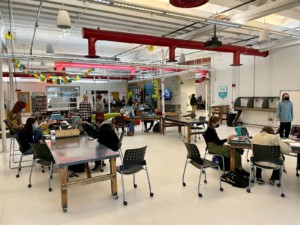The Great Skills-Based Education Land Grab

By: Jeremy Johnson
You’ve seen the numbers, and they aren’t pretty.
Nearly 15 percent of would-be workers under the age of 25 are unemployed. For college graduates, the unemployment rate approaches 17 percent, and for those equipped with only a high school diploma, it rises above 41 percent.
The reasons behind these dismal rates are complex, but one thing they do reveal is a striking disparity between the skills companies are seeking and the skills the workforce have to offer.
Under extreme competitive pressure, companies won’t hire employees who can’t do the work. On the other hand, young workers are often unsure how to acquire new skills or showcase the skills they do possess.
In other words, there’s a skill gap, and it creates an alarming dilemma — especially for educators. While higher education works on a four-year cycle, the technology cycle changes every 18 to 24 months. Many traditional institutions simply aren’t prepared for these rapid changes in technology.
This is not to disparage a traditional college degree. After all, education is more than just knowing the latest programming language, and companies want employees with a range of skills. They seek talent that will make a difference on day one, and that is the challenge.
Filling the Growing Skills Gap
Many students looking to gain marketable skills have to consider alternative means of obtaining in-field education.
Skills-based education not only meets students’ needs by equipping them with the necessary tools for work success, but it also meets employers’ needs by producing graduates who are prepared to excel in the workplace.
And new types of skills-teaching companies are rising to meet this need. Offerings range from high-touch, high-cost programs to lower-cost, open online courses. The varying costs reflect the amount of human involvement, so online, asynchronous courses obviously cost less.
As the extent of this structural challenge in our educational system becomes more apparent, a number of startups have sprung up in hopes of addressing it. Here are a few worth keeping an eye on:
- General Assembly: It’s a testament to how quickly this space is moving that a company founded in 2011 is now considered the old guard. General Assembly initially focused on providing co-working space and classes to startups and entrepreneurs, but quickly moved toward education for in-demand skill sets such as web design and development. By focusing on student outcomes and job placement, GA has scaled rapidly in the U.S. and has added locations in London, Hong Kong and Australia.
- Codeacademy: Although this company entered the market early, it offers free classes that teach students to code through a virtual learning experience and continues to be successful.
- Treehouse: This company centers on coding, online videos, practice tests, and forums at varying price points. Because it strives to make coding as simple as possible, its programs have great usability.
- Code School: This school teaches web technology from “the comfort of your browser.” Through video lessons, code challenges, and screencasts, it educates students on building web apps, JavaScript, HTML and iOS.
- Thinkful: This option provides online classes and one-on-one video mentorship programs for students who want to learn coding skills. Thinkful also has an online community where students can work alongside others in the program.
Because of their ability to provide a high-touch experience, high-end players see the strongest outcomes. On the other end, open online courses such as those Codeacademy offers are often free. While some students have been successful, these experiences aren’t nearly as consistent as high-touch alternatives.
Meeting the Need for Skills-Based Education
Across the spectrum of skill-based education approaches, people are sprinting toward the space predicted to lead the industry forward. But due to the rapid growth and creative evolution of the skills education field, it’s too early to determine which models will be widely adopted.
The $7 trillion education industry is constantly being disrupted. For example, nearly 7 million students took an online course in 2011. As a result, institutions invested $91 billion in online education in 2012.
And this is only the beginning. Consider the opportunity in these unmet needs:
- Thirty percent of students fail out of high school.
- Twenty percent of college freshmen enroll in remedial courses at four-year universities.
- Forty-six percent of college students don’t graduate.
These numbers reflect the state of education in the U.S. Abroad, the need is even greater. Youth unemployment in Nigeria, for instance, is 42 percent.
With such disparities in the education system, it’s likely a variety of approaches will succeed. This is a huge space, but in the end, students and employers will gravitate toward programs with high job placement rates for graduates.
Change is never easy, but it’s crucial young workers think beyond traditional education paths. Where can they get the specific, job-oriented skills they need? For some, this might mean forsaking a four-year degree altogether. Employers will also have to change and recognize these emerging skills-education providers as legitimate players.
In this new world, we will all be learning together.
Jeremy Johnson is an entrepreneur with a passion for leveraging technology to improve education. Jeremy is co-founder and an advisory board member for 2U, an education technology company that partners with universities to offer online degree programs.






0 Comments
Leave a Comment
Your email address will not be published. All fields are required.